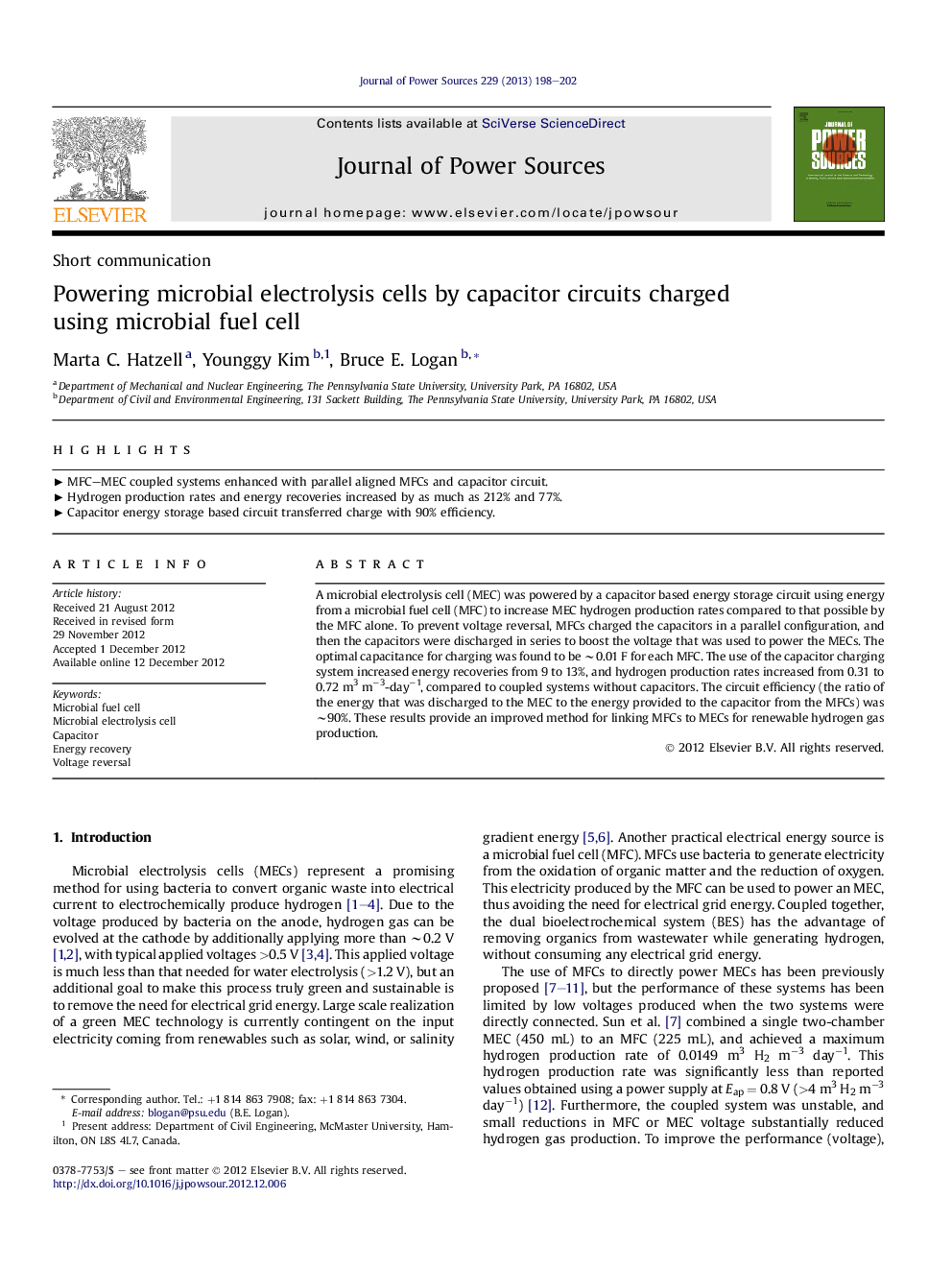| Article ID | Journal | Published Year | Pages | File Type |
|---|---|---|---|---|
| 1288242 | Journal of Power Sources | 2013 | 5 Pages |
A microbial electrolysis cell (MEC) was powered by a capacitor based energy storage circuit using energy from a microbial fuel cell (MFC) to increase MEC hydrogen production rates compared to that possible by the MFC alone. To prevent voltage reversal, MFCs charged the capacitors in a parallel configuration, and then the capacitors were discharged in series to boost the voltage that was used to power the MECs. The optimal capacitance for charging was found to be ∼0.01 F for each MFC. The use of the capacitor charging system increased energy recoveries from 9 to 13%, and hydrogen production rates increased from 0.31 to 0.72 m3 m−3-day−1, compared to coupled systems without capacitors. The circuit efficiency (the ratio of the energy that was discharged to the MEC to the energy provided to the capacitor from the MFCs) was ∼90%. These results provide an improved method for linking MFCs to MECs for renewable hydrogen gas production.
►MFC–MEC coupled systems enhanced with parallel aligned MFCs and capacitor circuit. ► Hydrogen production rates and energy recoveries increased by as much as 212% and 77%. ► Capacitor energy storage based circuit transferred charge with 90% efficiency.
